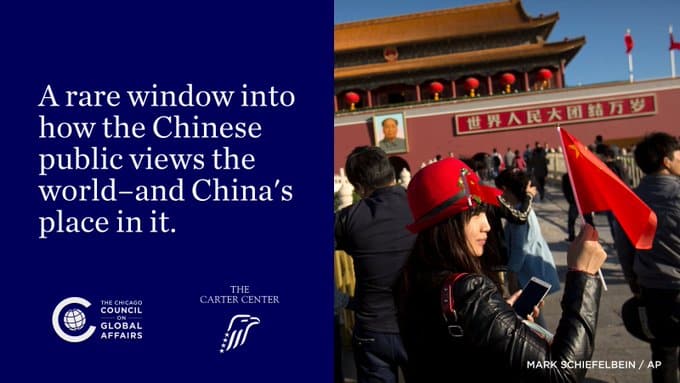Phase One Deal Explained
On January 15th, 2020, President Donald Trump and Chinese Vice Premier Liu He signed a temporary trade agreement known as the “Phase One” deal, which brings about a pause in what has been a contentious and controversial trade war. In return for easing some of their existing tariffs, the deal mandates that China buy more of the US’ agricultural goods over the next few years.
“It doesn’t get any better than this,” President Trump said of the deal. “We mark more than just an agreement. We mark a sea change in international trade…At long last, Americans have a government that puts them first.”
The Phase One agreement is, despite the president’s proclamations, just that: an agreement. Far from the comprehensive deal President Trump wants, the pact does little more than stipulate that China purchase $200 billion in US goods and services by 2021. But even that, warn Chinese officials, is not a guarantee. According to Wei Jianguo, former vice commerce minister, the agreement only works if the US “provide[s] good products at competitive prices,” cautioning that the government will not tolerate a “one-sided obligation.”
Indeed, experts on international affairs too are skeptical that the Phase One deal amounts to the “momentous step” President Trump has advertised. The deal’s signing is characterized by uncertainty and suffers from asymmetric information among the involved parties. Statements from the US and China on the preliminary deal back in December of 2019 diverged greatly, with the US announcing concessions to which China had not yet agreed. And as mentioned above, the two countries seem to have different ideas of what the practical effect of the deal will be.
Enforcing the agreement will also be challenging. James Palmer of Foreign Policy notes the tumultuous history between the US and China in abiding by their trade agreements: “How will the two sides, neither of which has a trustworthy record, put mechanisms in place to ensure that its promises are kept?” This is an important question and one to which neither side seems to have a complete answer. Wendy Cutler, a former US trade negotiator and current Vice President of the Asia society, even admitted that much of the novelty of the Phase One deal is that “it does not rely on independent panelists to adjudicate a dispute. Rather it’s up to each side to decide on its own whether the other is violating its commitments.” Opting not to render a judgement on the effectiveness of such autonomy, she concludes that the practical effect of self-regulation “remains to be seen.”
Once more, analysts are unsure about the feasibility of China reaching the goals outlined in the agreement. While the Phase One deal stipulates that China purchase $50 billion in US agricultural goods, many have expressed doubt that their demand can meet that threshold. As a report from Reuters made clear, even external factors may get in the way: “demand for soybeans – a key U.S. product used for animal feed – is down after African swine fever devastated China’s pig herd.” Others, like senior Asia commodity analyst Darin Friedrichs, claim that attaining the deal’s aims is simply impossible: “there’s just no logistical way that they can double imports in a year,” he said of the increase in goods purchased promised by China.
If the Phase One deal consists of uncertain terms, lacks a proper enforcement mechanism, and demands too much of the parties involved, how is one to view this new chapter in the seemingly endless trade war between the US and China?
The first is to acknowledge the positive aspects of the agreement. Although Treasury Secretary Steven Mnuchin has conceded that the deal fails to deliver on many of Trump’s promises, the pact marks a temporary pause in an increasingly tense standoff between the two economic giants. And the promise by the US to relax some of the existing tariffs is undoubtedly a win for American and Chinese consumers, who have been forced to bear most of the tax incidence.
Positive impacts notwithstanding, though, the future of trade relations between the two countries is far from certain. President Trump has insisted that a “phase two” deal will happen after the upcoming presidential election (if at all), leading business executives to doubt that any further developments will occur in the coming months. And although the Phase One agreement eases some of the existing tariffs on Chinese goods, many of them will remain in place until further negotiations occur. Consumers, as a result, will likely continue to suffer the consequences of a largely manufactured dispute until this November at the earliest.
Further, disputes between the US and China outside of trade relations have the potential to tarnish a mutually-agreeable, comprehensive deal. Mike Pompeo, US Secretary of State, has employed increasingly aggressive rhetoric aimed at China’s government, statements explicitly rebuked by China’s ambassador in Washington.
So while the Phase One deal deserves some praise for offsetting potentially catastrophic new tariffs, it does not, in any sense, mark the end of the trade war. Rather, it is little more than a purchasing agreement meant to temporarily stop the economic fighting between the US and China. There is still much work to be done before both countries (and more importantly, the working-class citizens therein), reap the benefits of a comprehensive and long-lasting solution.
By Mark Weiss
The views expressed in this commentary are solely that of the author and do not represent those of The Carter Center.








